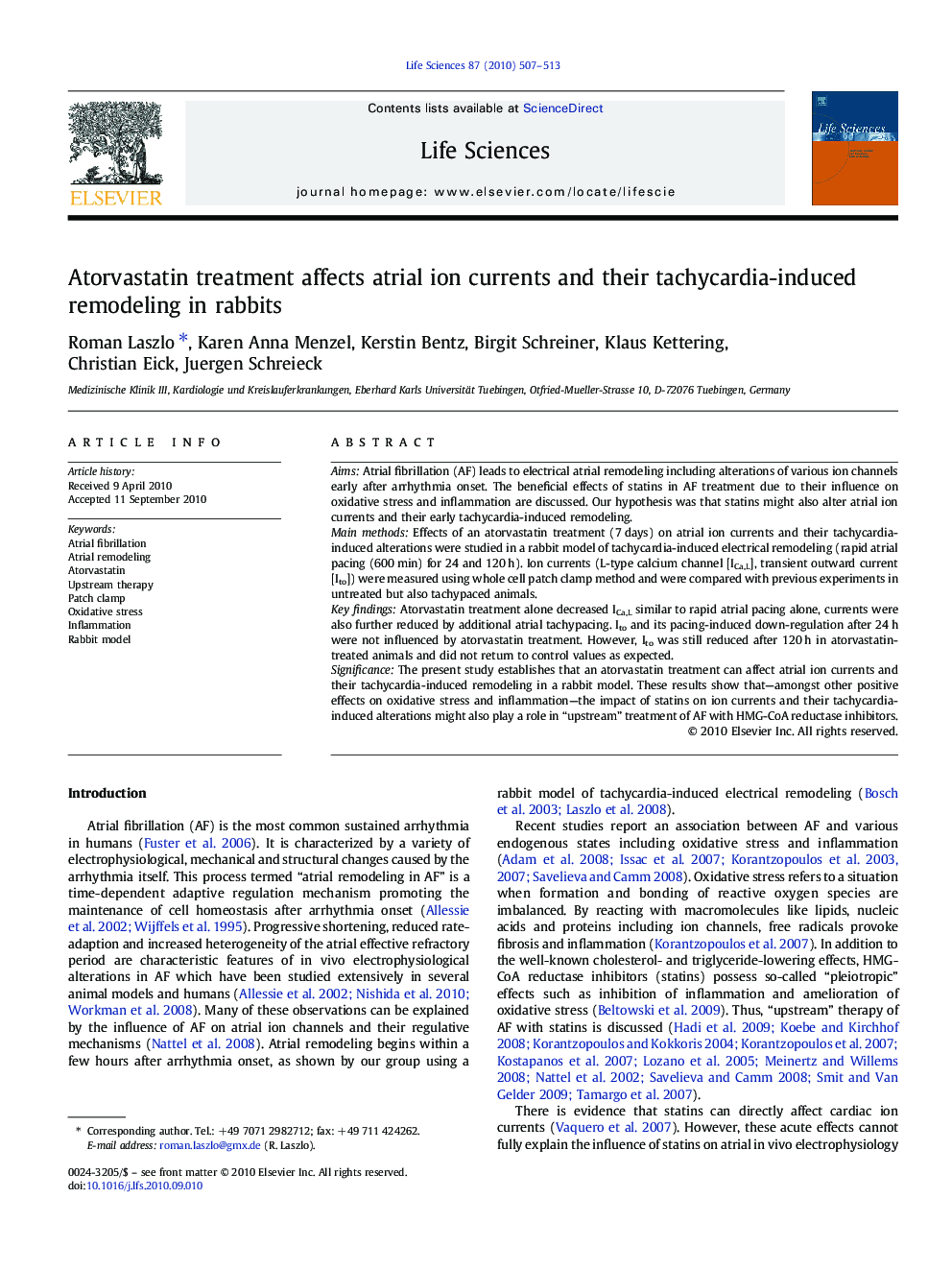| Article ID | Journal | Published Year | Pages | File Type |
|---|---|---|---|---|
| 2552666 | Life Sciences | 2010 | 7 Pages |
AimsAtrial fibrillation (AF) leads to electrical atrial remodeling including alterations of various ion channels early after arrhythmia onset. The beneficial effects of statins in AF treatment due to their influence on oxidative stress and inflammation are discussed. Our hypothesis was that statins might also alter atrial ion currents and their early tachycardia-induced remodeling.Main methodsEffects of an atorvastatin treatment (7 days) on atrial ion currents and their tachycardia-induced alterations were studied in a rabbit model of tachycardia-induced electrical remodeling (rapid atrial pacing (600 min) for 24 and 120 h). Ion currents (L-type calcium channel [ICa,L], transient outward current [Ito]) were measured using whole cell patch clamp method and were compared with previous experiments in untreated but also tachypaced animals.Key findingsAtorvastatin treatment alone decreased ICa,L similar to rapid atrial pacing alone, currents were also further reduced by additional atrial tachypacing. Ito and its pacing-induced down-regulation after 24 h were not influenced by atorvastatin treatment. However, Ito was still reduced after 120 h in atorvastatin-treated animals and did not return to control values as expected.SignificanceThe present study establishes that an atorvastatin treatment can affect atrial ion currents and their tachycardia-induced remodeling in a rabbit model. These results show that—amongst other positive effects on oxidative stress and inflammation—the impact of statins on ion currents and their tachycardia-induced alterations might also play a role in “upstream” treatment of AF with HMG-CoA reductase inhibitors.
